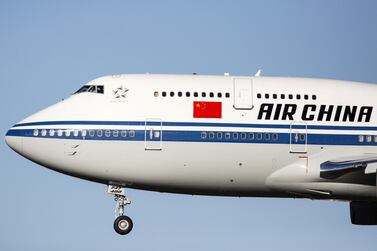Boeing is working with US regulators to address yet another production flaw with its marquee 787 Dreamliner, the fourth that has come to light in recent weeks involving the jet’s carbon-composite airframe.
The latest fault, involving a slight depression near where the plane’s vertical fin joins its fuselage, came to light in late 2019, the Chicago-based manufacturer said in an emailed statement. The issue doesn’t affect flight safety and has already been addressed in manufacturing processes, Boeing said.
“Our expectation is that this will require a one-time inspection during regularly scheduled maintenance,” the company said of the impact on the 787 fleet.
Investors have been rattled by the string of disclosures involving the 787, Boeing’s largest long-term source of cash behind the grounded 737 Max. The planemaker’s shares have fallen nearly 10 per cent since the initial reports that it had grounded eight Dreamliners after uncovering two unrelated issues that, taken together, could dangerously weaken the structure.
Boeing is also studying whether almost 900 horizontal stabilisers made at its Utah fabrication plant have gaps that could cause premature aging in the small wing in the Dreamliner’s tail. Boeing identified that problem in February and notified the FAA. Repairs typically take four to 10 days.
That mishap probably wouldn’t have attracted much attention had Boeing not already been under intense scrutiny following two fatal Max crashes that killed 346 people, said Ron Epstein, an analyst with Bank of America. Boeing’s KC-46 military tanker has also suffered a string of quality lapses.
“It’s on the heels of everything that happened with the Max and the quality issues with tanker,” Mr Epstein said. “It’s reputational.”
Seattle radio station KOMO reported Thursday that a US Federal Aviation Administration document flagged that shims - material used to close gaps that can occur during production - were discarded before final fasteners were installed on the section. That left improper gaps in the tail sections of potentially hundreds of airplanes.
As with the earlier 787 manufacturing issues, the FAA said it’s investigating the latest issue with the wide-body jet and is working with Boeing. The regulator said it’s too soon to say whether it will have to mandate repairs or inspections.






